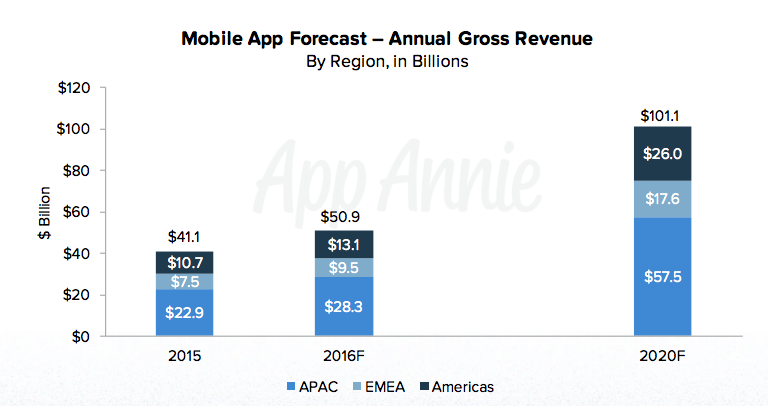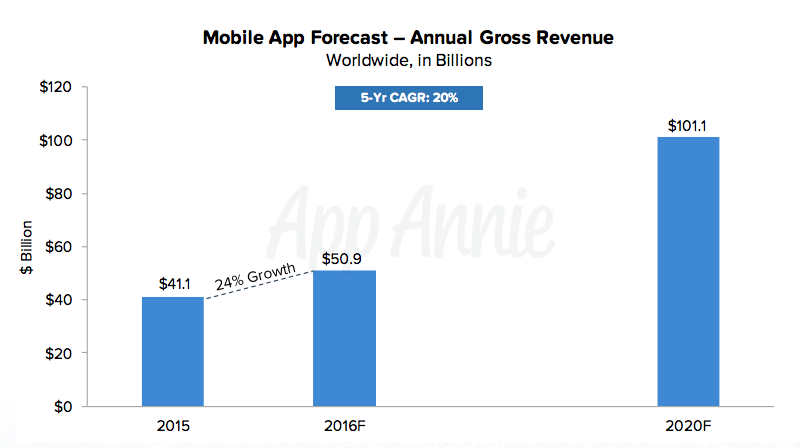Application economics will double to $ 101 billion by 2020

What is the economics of mobile applications? Of those who make money and have a job thanks to mobile apps. According to a study by App Annie, by 2020 this economy will double in size and reach $ 101 billion.
This growth will occur due to increased use of smartphones around the world and improved adaptability of mobile devices.
')
An interesting fact: in 2015, games brought 85% of the annual revenue of mobile applications and $ 34.8 billion worldwide. It is expected that in 2016 these figures will grow to $ 41.5 billion and to $ 74.6 billion by 2020.
But other industries will grow even faster than games. Unlike the market indicators a few years earlier, when the main focus was on games and media publications, application publishers now cover all sectors of activity. Banking services, retail, airlines, transport services and government agencies. With the support of venture capital and hedge funds, the applications were able to gain substantial value and actual income.

More than 10,000 resources have been used to research App Annie.
In 2016, the global market for mobile applications is projected to expand by 24% and reach $ 51 billion of gross income (the amount that consumers spend on mobile applications in stores) in all stores of mobile applications.
While the major markets of the United States, Japan, and China are leading the way in generating revenue from mobile apps, App Annie offers great opportunities for the fast-growing markets of India, Indonesia, Mexico, and Argentina. China is expected to surpass the United States in total app store revenue in the first half of 2016. In early 2015, he has already bypassed the United States by the number of downloads.
Income from mobile applications is not always associated with regional recessions (as in Brazil and Argentina in 2015). For example, in Brazil, despite the economic downturn, revenue is expected to increase by 40% already this year. App Annie connects this with the well-established position of smartphones in the market in 2008-2010 in mature markets such as the United States.
Globally, the total time spent in Android applications increased by 63% from 2014 to 2015. The use of applications will increase on portable devices - devices of virtual and augmented reality, wearable devices, TVs, in cars.
In general, the number of downloads in app stores should increase by 33% to 147.3 billion in 2016 and reach 284.3 billion in 2020.

As you can see, mobile applications are no longer a trend of the future, but a given that must be taken by those who do not want to completely give their industry to competitors. This thesis was even adopted by regional markets in the context of the economic downturn. So follow the trend of “Be mobile!” :)

BYYD • Mobile Advertising Platform
Source: https://habr.com/ru/post/300246/
All Articles